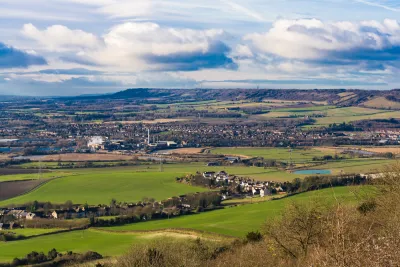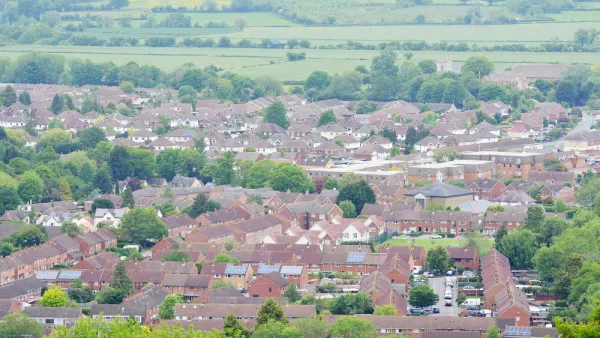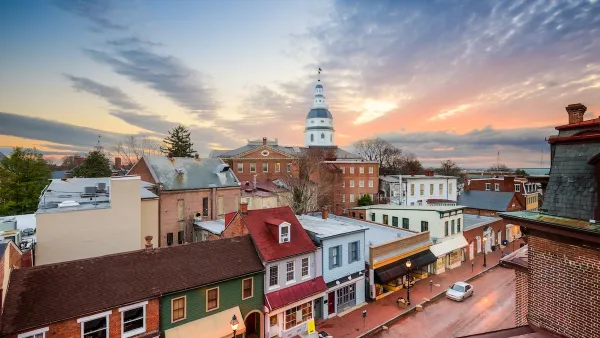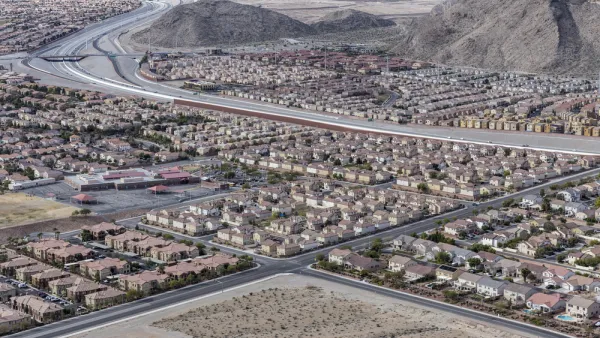Touted as a solution to mindless suburban expansion, the vast green belts around U.K. cities create new challenges. Among them: less affordable housing, longer commutes, and dubious environmental benefits. What happens if these spaces get developed?

A traveler out of London passes miles of suburbs that give way to rolling meadows, hedgerows, country churches, and sheep. This happens fairly quickly. The U.K. has remained relatively light on sprawl due to the green belts around its major cities, great swaths of classic countryside kept free from new development “except in very special circumstances.”
Despite its advantages, the green belt comes with some nasty side effects. As Rowan Moore observes, the green belt contributes to a lack of quality housing, lengthens commutes, and provides little access to city residents. The green belt is too close to the city to preserve the character of rural Britain, and not finely-tuned enough to serve citizens as a park. Its residents are seen as affluent gentry who rig the real estate market in their favor.
Continuing policy protects green belt status unilaterally. From the article: “[The green belt is] part of English, if not British, national identity, protected by the shade of William Blake. It is brandished at party conferences and makes tabloid headlines, with frequent references to the ‘concreting over’ of a green and pleasant land.”
Moore outlines an ongoing debate between green belt supporters and its detractors, some of whom desire large-scale development of the land in question. The article advocates a middle road between wholesale development and the current protectionist policy. Of calls to rescind the green belt, Moore writes, “Something more is required, which is the ability to plan positively, to create new places as well as protect old ones, a skill this country had until relatively recently.”
FULL STORY: Is it time to rethink Britain's green belt?

Analysis: Cybertruck Fatality Rate Far Exceeds That of Ford Pinto
The Tesla Cybertruck was recalled seven times last year.

National Parks Layoffs Will Cause Communities to Lose Billions
Thousands of essential park workers were laid off this week, just before the busy spring break season.

Retro-silient?: America’s First “Eco-burb,” The Woodlands Turns 50
A master-planned community north of Houston offers lessons on green infrastructure and resilient design, but falls short of its founder’s lofty affordability and walkability goals.

Test News Post 1
This is a summary

Analysis: Cybertruck Fatality Rate Far Exceeds That of Ford Pinto
The Tesla Cybertruck was recalled seven times last year.

Test News Headline 46
Test for the image on the front page.
Urban Design for Planners 1: Software Tools
This six-course series explores essential urban design concepts using open source software and equips planners with the tools they need to participate fully in the urban design process.
Planning for Universal Design
Learn the tools for implementing Universal Design in planning regulations.
EMC Planning Group, Inc.
Planetizen
Planetizen
Mpact (formerly Rail~Volution)
Great Falls Development Authority, Inc.
HUDs Office of Policy Development and Research
NYU Wagner Graduate School of Public Service




























